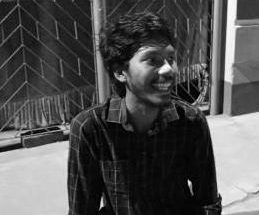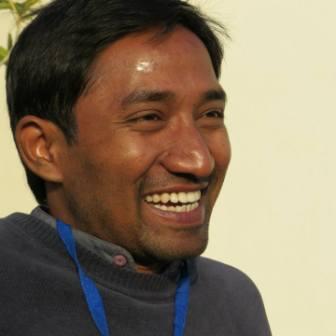Salman Farissi

In 2019, when BJP won with a bigger majority than ever before, the minorities of the country, especially religious minorities, were not only disappointed but deeply distressed. While they pondered their prospects, followers of the hardcore right-wing, sycophants of Hindutva ideology, were celebrating and contemplating making their idea of Hindu-Rashtra a reality. Before the Balakot air strikes, their electoral prospects had simmered with a rising rage towards BJP for their handling of the economy (CSDS data – the Hindu newspaper), environment and the whole of the internal affairs of the country, but were rescued by this particular event or I might say its theatrics (while the Indian mainstream media lauded the attack as against terrorists and boasted of destroying the Jaish-e-Muhammed camps along with terrorists, the Reuters, the Hindu daily and other international publications showed that the bombing took place at a secluded place in Pakistan).
Indeed the move was an offensive but calling it an all-out offensive doesn’t sit with the truth. The attack altogether seemed like a theatrical drama enacted to bring back the lost audience and it did fetch good results (2019 electoral mandate). The timing of the attack was highly suspicious and the opposition camp sensed dampening support although they decided to stick to ground realities rather than the cinematic fantasies that the BJP was trying to market. In the end, the BJP’s gamble won and once again proved that a majority of the Indian populace can easily be persuaded by theatrical fantasies if the spice of communalism is added to it.
RSS-BJP is a party known to reap good dividends with a communal agenda which was planted by L.K. Advani in 1992 with the Babri demolition. The aftermath saw countrywide communal riots in which more than 2000 people died, a majority of them Muslim. As a result of this, the country’s elections for the first time saw BJP’s tally crossing 50 seats whereas it was previously restricted to single digits below five. So, if BJP is a communally polarizing evil entity, how does it find such support in the Indian populace?
It is this question which makes us look back at what Ambedkar said about India: that democracy is a top-dressing for India whose soil is undemocratic. And it still echoes today. In 2002, BJP played another major game, this time in Gujarat under Narendra Modi who was the chief minister of the state (he has been given clean chit by Gujarat high court recently, but Teesta Setalvad, an activist and Rana Ayyub, a journalist, have proven that his hands are not clean). The flashpoint was the burning of a train compartment in which Hindu pilgrims were traveling. After the burning and deaths of 59 pilgrims, Muslims were blamed by both the State Government and its followers (there is enough evidence today to conclude that Muslims had nothing to do with the incident). A night before the carnage, some of the houses of Godhra were found to be marked and all of them belonged to Muslims.
The carnage would go down in history as one of the most brutal pogroms (premeditated riots are known as pogroms, and there is enough evidence which points to it being one) in the history of not only India but globally. One of the survivors of the carnage, Bilkis Bano, lost her two children, a three-year-old and two-day-old infant. They were killed by Hindutva hooligans who lost humanity to carnal pleasure and all in the name of religion. She was raped and left for dead by the arsonists. The culprits, thinking that she was dead, went away only for her to tell her story to the world later. All 13 of her family members were killed in the riots. The present BJP Government of Gujarat was told by the Supreme Court to give her 50 lakh compensation and a government job in 2018, after 16 years of court battle. Imagine how long she fought, forcing herself to relive those moments which destroyed her life, shattered her dreams, annihilated her hopes! Can any amount of money or compensation in any form heal her trauma?
The pogrom went on for hours and police arrived only when the sun rose after 2000 people died, most of them Muslims. The accounts of the pogrom are so notorious and its detailed account would send such chills across the spine that I don’t want to discuss them here. The aftermath helped BJP in the upcoming elections and firmed up the party as an indomitable force in the political arena of not only the state but also the country. Now, the Sangh bigots might not like any of the truths that I have mentioned. Their sycophancy towards Sangh ideologues and the Modi-Shah duo won’t allow them to accept my words. Although it is quite untenable a task to convince bigots while they come up with logical fallacies to distract the audience, it is worth looking into history to find another notorious riot – the Anti-Sikh riots of 1984.
To seek revenge for Indira Gandhi’s death upon Sikhs, what the Congress did under Rajiv Gandhi was highly condemnable. Besides, one thing that rankles me is that, while it is understandable for a son to feel vengeful upon his mother’s death, why did the Congress take part in that pogrom? This was a turning point for political analysts to assess how much Congress had become obsessed with that one family which has resulted in Congress’s present slump in the electoral arena of India. But, it is well known that after that Congress has not indulged in such acts of communal polarization which prompts political analysts to conclude that the 1984 episode was an act of vengeance rather than a vile and wicked game like the one that RSS-BJP plays so often for electoral gains.
Ambedkar knew India and analyzed it with his great intellect to conclude some bitter truths about it. He predicted this whole scenario well before independence and yet, a man who had proven his mettle was derided even by the Congress who projected themselves as the symbol of the idea of India.
Dr. B. R. Ambedkar and the Other Giants of Indian Freedom Struggle: A Brief Look
Mahatma Gandhi is a prerequisite in the recipe when we talk about the Indian freedom struggle. Along with him, there is Subash Chandra Bose whom Gandhi referred to as the ‘greatest patriot’ and then comes the villain of Sangh Parivar’s version of India, Pandit Jawaharlal Nehru. Bose was a fiery revolutionary who went on to form the Indian National Army (INA) and believed more in a militarized form of struggle to achieve Independence.
Some historians consider him to be a glue between Hindus and Muslims as he was quite popular in both communities which makes them deduce that if Bose hadn’t died in the air crash, the partition of India wouldn’t have happened. But it is clear that Dr. Bhim Rao Ambedkar was far ahead of them in intellect and enduring wisdom with a keen sense of sincerity. As the Father of the Constitution, he has proven his mettle as a visionary not just for the idea of India but for the idea of making India great. His admirable sincerity showed when he resigned in 1951 from the post of the Law Minister of India out of frustration at not being able to bring in changes that he had worked for years, owing to lack of basic foundational powers that he was given.
Babasaheb (as Ambedkar is lovingly called by his followers) never gave up. He continued his struggle for the empowerment of the socially downtrodden populace of India which in the end made him give up Hinduism and accept Buddhism. It is quite notable that Babasaheb was not a great admirer of Gandhi although he had good relations with the latter. It is quite notable when Babasaheb countered Gandhi’s views on the emancipation of Dalits by the latter calling them Harijans (Children of God). Babasaheb was known to have argued that just by changing the way the community is known won’t help in emancipating them. What the community needs is to become socially, politically and economically empowered within their original name ‘Dalit’ so that the community realizes who they are and identifies with the real-life scenario of who they are. Gandhi’s intent might have been good but his idea lacked the realism and vision of Ambedkar. Gandhi’s idea would have only resulted in lower caste people living in a fantasy rather than facing reality.
Babasaheb’s vision of communal electorates would have stopped the partition of India if it was implemented as Jinnah’s Muslim League was very much in league with this idea. It is quite clear that when Jinnah came up with the two-nation theory earlier proposed by V. D. Savarkar (the Hindutva ideologue of RSS), he never intended it to become a reality. Rather, he was using it as a tool to threaten the Congress and the Hindu majority for giving the Muslim League or Muslims empowerment in the Indian political, social and economic scenario as he was afraid of majoritarian oppression of Muslims. Ambedkar saw this fear as a reality; he saw the majoritarian oppression as an imminent threat to all the minorities living in India. However, Gandhi’s fast unto death against the communal electorate system, which he saw as separating the general populace communally, forced Ambedkar to withdraw the proposal even though all the parties involved supported it and the Britishers agreed to it as well. This, as history tells us, was a bad idea. Later, Jinnah’s reluctance and disappointment were quite evident when the two-nation theory became a reality as he was reported to have said, ‘and we ended up getting a moth-eaten Pakistan’.
The Present Day
As we come to the present day, Ambedkar’s fears seem to have become a reality with the majoritarian agenda of the Sangh Parivar is being pursued vigorously by the present government at the Centre. Section 144a has been imposed in UP, the most populous state, amid widespread violence and Internet shutdown. At least 100 have died, 10000s are detained in the widespread protests that have shocked the country after the Central Government came out with a proposed amendment to the Citizenship Act, called the Citizenship Amendment Act (CAA) which is communally polarizing. The National Register for Citizens (NRC), which again is an amendment of Census Act, seems to be another boiling pot for the country as it requires citizens to prove their citizenship based on certified documents that the Government finds acceptable.
The Government has not yet specified what the ‘certified documents’ are, as most of the documents including Passport, Aadhaar and Voter ID do not fall under the Government’s jurisdiction of ‘certified documents’. Then the Government goes on to say that ‘there’s nothing to worry for real Indians as genuine citizens have nothing to fear’. It is quite perplexing who ‘real Indians’ are and what ‘Genuine Citizens’ mean as both CAA and NRC are communal with an explicit agenda of ‘Hindu Rashtra’. Coming from an organization and party like RSS and BJP which idolize Golwalkar – the Hindutva icon who wrote in his essay an appreciation of Hitler’s Nazism and that India should learn from Hitler’s ethnic cleansing – it’s quite evident what they are up to at the Centre.
The Central Government has been running a third campaign for preparation of a National Population Register (NPR). This is to be prepared by the States and sent to the Centre so that the latter can start the NRC. While the Kerala Government and West Bengal Government have openly stated that they won’t continue NPR, the former IAS officer, Kannan Gopinathan, who resigned due to the autocratic style of governance shown by the Central Government in Kashmir, clearly mentions the link between the three campaigns (CAA, NRC, NPR). By Articles 5 and 11, states cannot refrain from a central matter like citizenship in which states don’t have a say. In a time when the Supreme Court is playing a balancing act, it is to be seen how the states will go ahead with their opposition to the three campaigns.
As the government continues its theatrics, thinking that they are the foxes of the jungle, they seem to have highly overestimated their intellect. The recent protests rose from the cradles of higher education in India, and they have spread all across the country with the youth’s knowledge and energy fuelling it. By reverting to violence, the Indian State has called upon condemnation from international bodies. Education is a prime driving force of holistic development. A Government that doesn’t like to be questioned, and seems to have forgotten that societal evils like communalism which stem from ignorance will find their arch-nemesis in secularism backed by knowledge.
The Central Government seems to have been outfoxed in its own game by antonymous ideologies. The youth doesn’t seem to be repeating the idiom of ‘my great India’ (Mera Bharat Mahan) like the Andh-Bhakts (‘blind followers’, as the bigot followers of RSS-BJP are fondly known among the general populace of India), but rather dreams of lifting India from its current state of ‘Darkness of Ignorance’ to the ‘Light of Knowledge’ and make India great in the future. This is an outcry of Ambedkar’s visionary ideals and the path ahead towards this goal can be found by rediscovering the legend called Ambedkar. At this dawn, let us emancipate ourselves from the RSS agenda by remembering Babasaheb’s words:
‘Educate, Agitate, Organize’.
~~~
Salman Farissi is a PhD scholar and a NET-JRF Fellow at the Department of Environmental Science, Central University of Kerala, Kasaragod. He hails from Perinthalmanna in Kerala.










